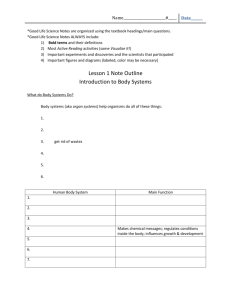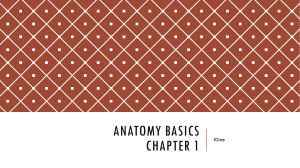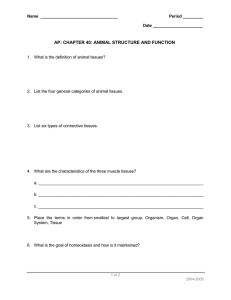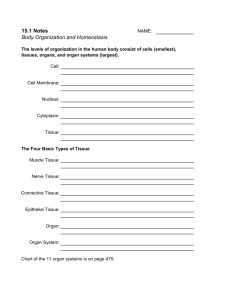Body Organization and Homeostasis Notes
advertisement
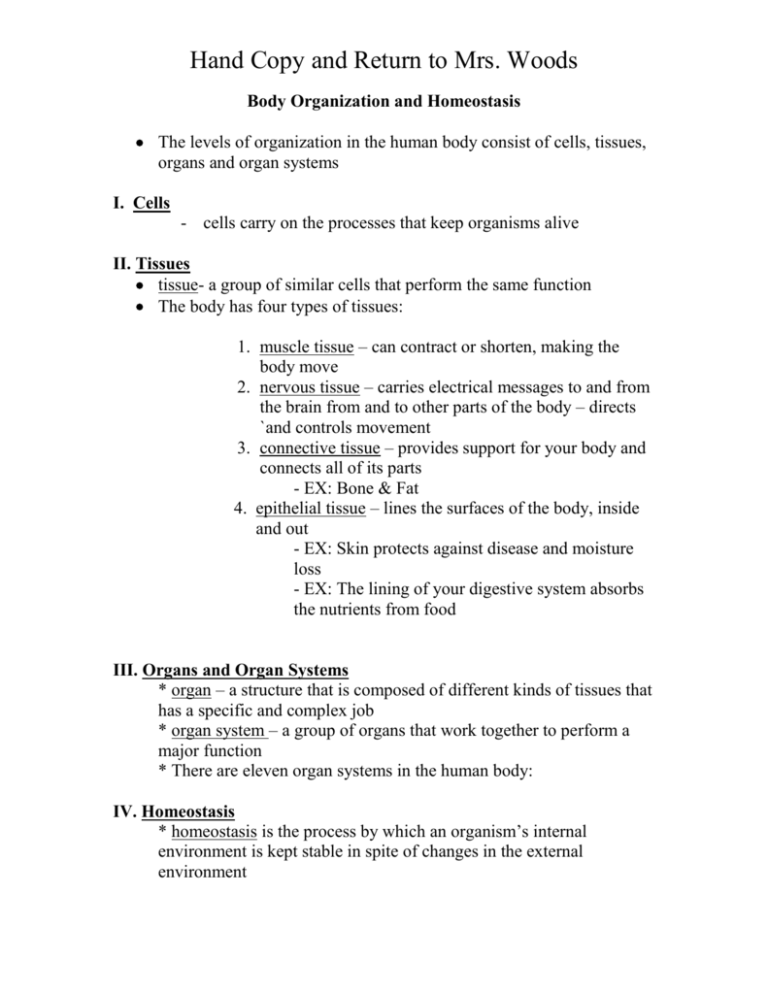
Hand Copy and Return to Mrs. Woods Body Organization and Homeostasis The levels of organization in the human body consist of cells, tissues, organs and organ systems I. Cells - cells carry on the processes that keep organisms alive II. Tissues tissue- a group of similar cells that perform the same function The body has four types of tissues: 1. muscle tissue – can contract or shorten, making the body move 2. nervous tissue – carries electrical messages to and from the brain from and to other parts of the body – directs `and controls movement 3. connective tissue – provides support for your body and connects all of its parts - EX: Bone & Fat 4. epithelial tissue – lines the surfaces of the body, inside and out - EX: Skin protects against disease and moisture loss - EX: The lining of your digestive system absorbs the nutrients from food III. Organs and Organ Systems * organ – a structure that is composed of different kinds of tissues that has a specific and complex job * organ system – a group of organs that work together to perform a major function * There are eleven organ systems in the human body: IV. Homeostasis * homeostasis is the process by which an organism’s internal environment is kept stable in spite of changes in the external environment

